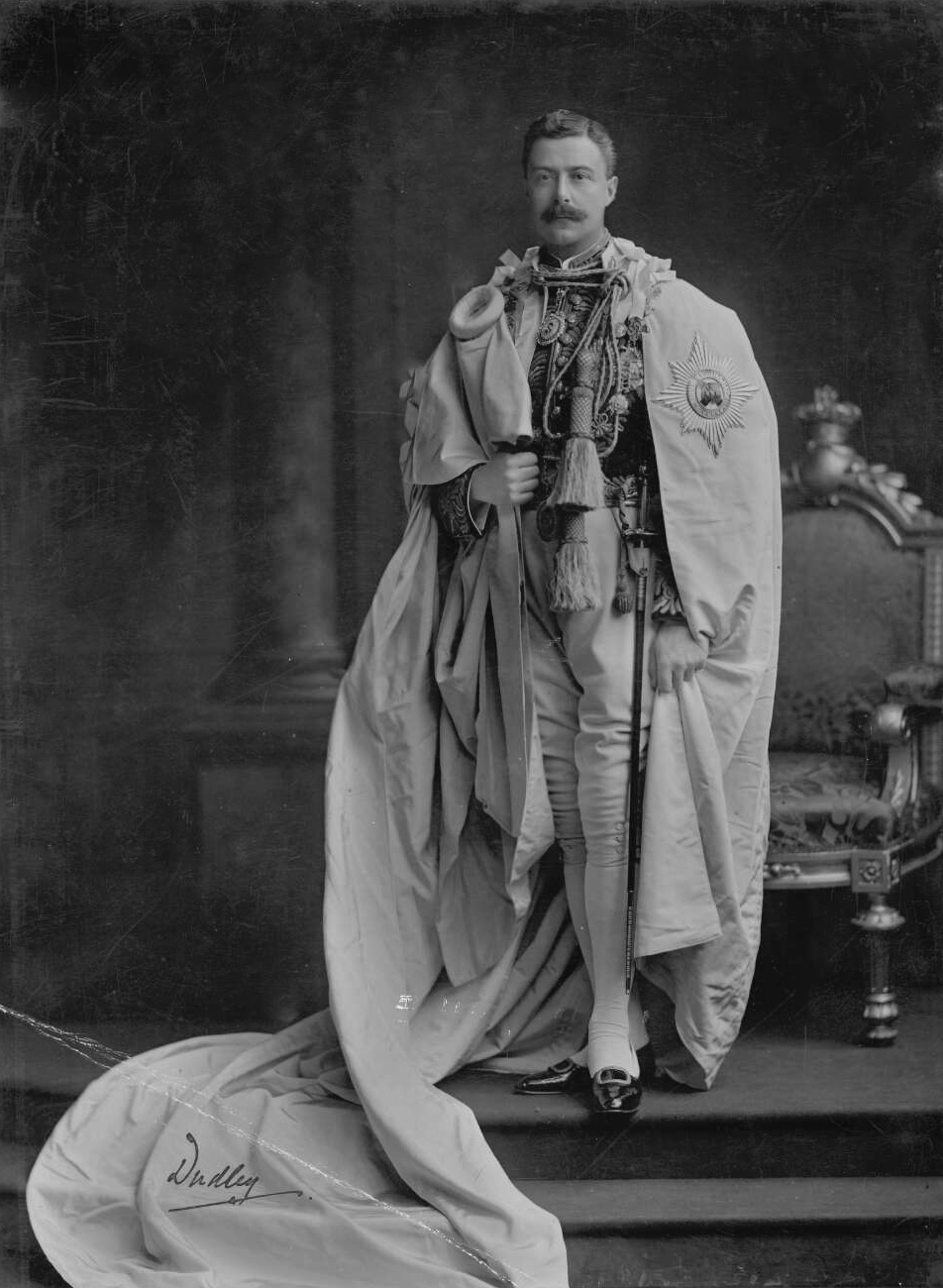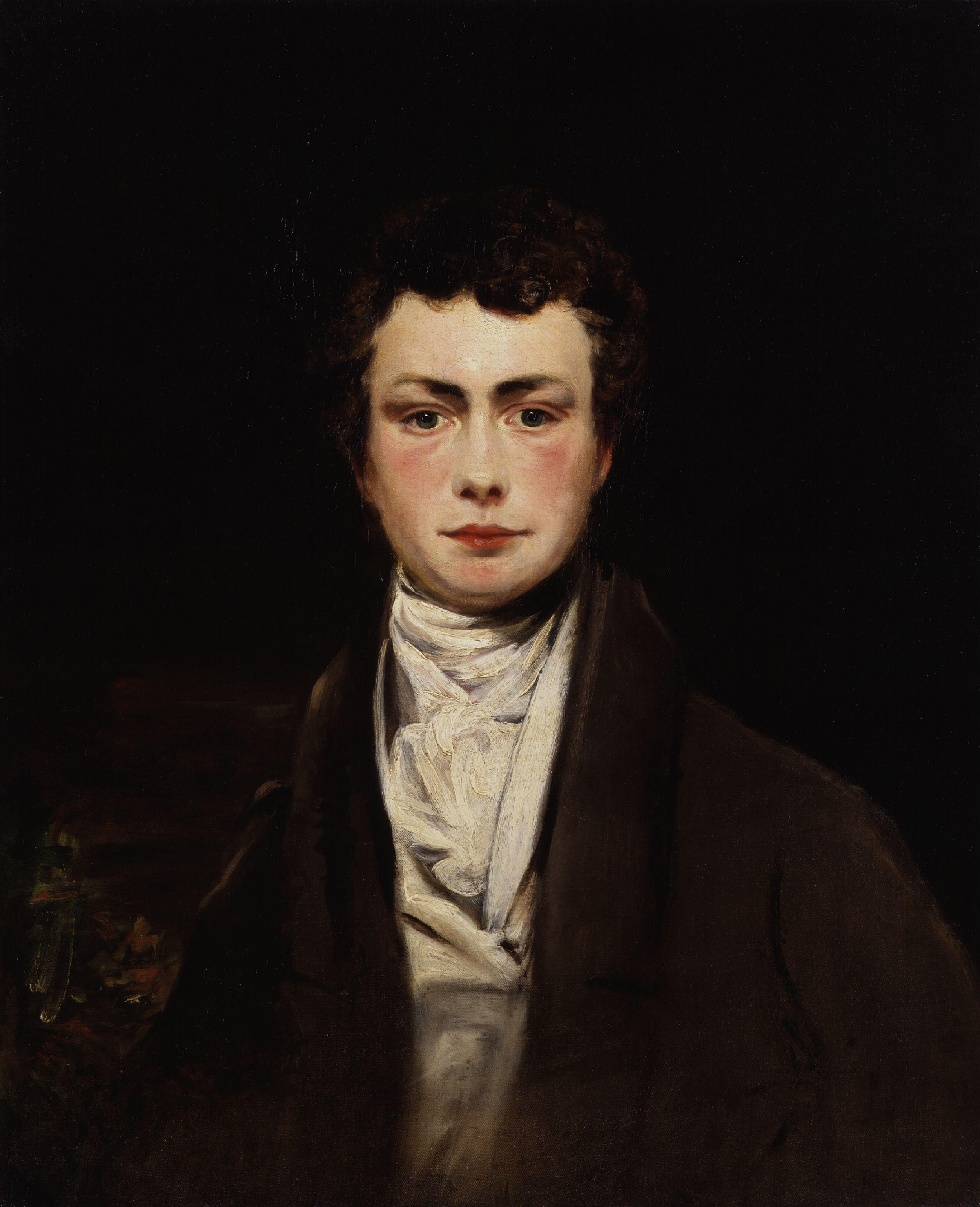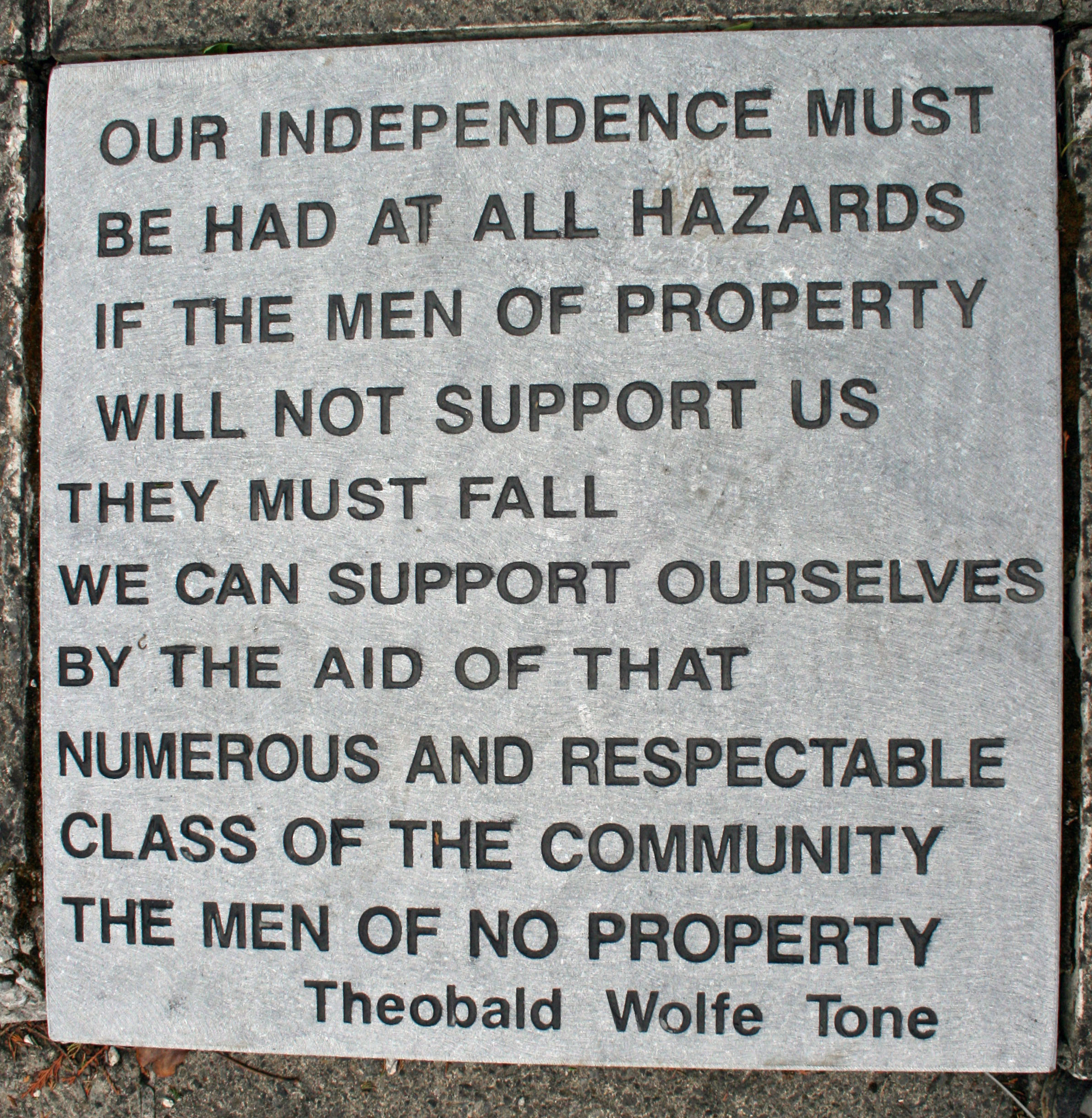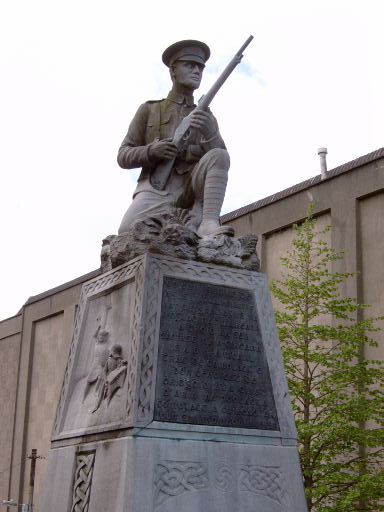|
St. Kevin's Church, Camden Row, Dublin
There was a St. Kevin's Church ( ga, Eaglais Naomh Caoimhín) in what is now St. Kevin's Park, Camden Row, Dublin, Ireland at least as far as the 13th century. After the Reformation, it became an Anglican church. The original church was replaced around 1750 by a new one, closed in 1912 and now in ruins. Both churches were dedicated to Kevin of Glendalough. There is also a Catholic St. Kevin's Church a short distance away on Harrington Street. Church The church was first mentioned in historical annals in 1226.Notice board It was situated some distance from the walls of Dublin, in the Irish part of the city, but close to a monastic settlement in the region of present-day Aungier Street. From the 13th century it formed part of the Manor of St. Sepulchre, which was directly under the jurisdiction of the Archbishop of Dublin. An archaeological excavation carried out in 1967 uncovered some medieval graves and coins. The present ruined church, built on the foundation of the medieval ... [...More Info...] [...Related Items...] OR: [Wikipedia] [Google] [Baidu] |
Dublin
Dublin (; , or ) is the capital and largest city of Ireland. On a bay at the mouth of the River Liffey, it is in the province of Leinster, bordered on the south by the Dublin Mountains, a part of the Wicklow Mountains range. At the 2016 census it had a population of 1,173,179, while the preliminary results of the 2022 census recorded that County Dublin as a whole had a population of 1,450,701, and that the population of the Greater Dublin Area was over 2 million, or roughly 40% of the Republic of Ireland's total population. A settlement was established in the area by the Gaels during or before the 7th century, followed by the Vikings. As the Kingdom of Dublin grew, it became Ireland's principal settlement by the 12th century Anglo-Norman invasion of Ireland. The city expanded rapidly from the 17th century and was briefly the second largest in the British Empire and sixth largest in Western Europe after the Acts of Union in 1800. Following independence in 1922, ... [...More Info...] [...Related Items...] OR: [Wikipedia] [Google] [Baidu] |
Harold's Cross
Harold's Cross () is an affluent urban village and inner suburb on the south side of Dublin, Ireland in the postal district D6W. The River Poddle runs through it, though largely in an underground culvert, and it holds a major cemetery, Mount Jerome, and Our Lady's Hospice. Location Harold's Cross is situated north of Terenure and Rathgar, west of Rathmines, east of Crumlin and Kimmage, and directly south from the Grand Canal at Clanbrassil Street. It lies within the jurisdiction of Dublin City Council, and straddles the boundary of Dublin 6, Dublin 6W and Dublin 12 postal districts. The Poddle The River Poddle runs south to north through the area. At the southern end of the district, the river's course splits at the centuries-old "Tongue" or "Stone Boat" with part of its flow diverted underground into the "City Watercourse" culvert, while the mainline continues overground, passing through ponds. The Poddle goes underground between Mount Argus and Mount Jerome, then ... [...More Info...] [...Related Items...] OR: [Wikipedia] [Google] [Baidu] |
Richard Wellesley, 1st Marquess Wellesley
Richard Colley Wellesley, 1st Marquess Wellesley, (20 June 1760 – 26 September 1842) was an Anglo-Irish politician and colonial administrator. He was styled as Viscount Wellesley until 1781, when he succeeded his father as 2nd Earl of Mornington. In 1799, he was granted the Irish peerage title of Marquess Wellesley. He was also Lord Wellesley in the Peerage of Great Britain. He first made his name as fifth Governor-General of India between 1798 and 1805. He later served as Foreign Secretary in the British Cabinet and as Lord Lieutenant of Ireland. In 1799, his forces invaded Mysore and defeated Tipu, the Sultan of Mysore, in a major battle. He also initiated the Second Anglo-Maratha War. He was the eldest son of The 1st Earl of Mornington, an Irish peer, and Anne, the eldest daughter of The 1st Viscount Dungannon. His younger brother, Arthur, was Field Marshal The 1st Duke of Wellington. Education and early career Wellesley was born in 1760 in Dangan Castle ... [...More Info...] [...Related Items...] OR: [Wikipedia] [Google] [Baidu] |
Lord Lieutenant Of Ireland
Lord Lieutenant of Ireland (), or more formally Lieutenant General and General Governor of Ireland, was the title of the chief governor of Ireland from the Williamite Wars of 1690 until the Partition of Ireland in 1922. This spanned the Kingdom of Ireland (1541–1800) and the United Kingdom of Great Britain and Ireland (1801–1922). The office, under its various names, was often more generally known as the Viceroy, and his wife was known as the vicereine. The government of Ireland in practice was usually in the hands of the Lord Deputy up to the 17th century, and later of the Chief Secretary for Ireland. Role The Lord Lieutenant possessed a number of overlapping roles. He was * the representative of the King (the "viceroy"); * the head of the executive in Ireland; * (on occasion) a member of the English or British Cabinet; * the fount of mercy, justice and patronage; * (on occasion) commander-in-chief in Ireland. * Grand Master of the Order of St. Patrick Prior to th ... [...More Info...] [...Related Items...] OR: [Wikipedia] [Google] [Baidu] |
William Magee (archbishop Of Dublin)
William Magee (18 March 176618 August 1831) was an Irish academic and Church of Ireland clergyman. He taught at Trinity College Dublin, serving as Erasmus Smith's Professor of Mathematics (1800–1811), was Bishop of Raphoe (1819–1822) and then Archbishop of Dublin until his death. Biography He was born at Enniskillen, County Fermanagh, Ireland, the third son of farmer John Magee and Jane Glasgow. He was educated at Trinity College Dublin (BA 1786, MA 1789, BD 1797, DD 1801), where he had been a Scholar (1784), and was elected fellow in 1788. He was appointed Erasmus Smith Professor of Mathematics (and Senior Fellow) in 1800, and in 1813 was elected a Fellow of the Royal Society as a "gentleman of high distinction for mathematical & philosophical knowledge & Author of several works of importance". Thought not a research mathematician, he was a popular teacher at TCD and was well-liked by students. He had been ordained into the Church of Ireland in 1790, and two of his se ... [...More Info...] [...Related Items...] OR: [Wikipedia] [Google] [Baidu] |
Porter (beer)
Porter is a style of beer that was developed in London, England in the early 18th century. It was well- hopped and dark in appearance owing to the use of brown malt.Dornbusch, Horst, and Garrett Oliver. "Porter." The Oxford Companion to Beer. Ed. Garrett Oliver. 2012. Print. The name is believed to have originated from its popularity with working class people and porters. The popularity of porter was significant. It became the first beer style to be brewed around the world, and production had commenced in Ireland, North America, Sweden, and Russia by the end of the 18th century. The history of stout and porter are intertwined. The name "stout", used for a dark beer, came about because strong porters were marketed as "stout porter", later being shortened to just stout. Guinness Extra Stout was originally called "Extra Superior Porter" and was not given the name "Extra Stout" until 1840. Today, the terms stout and porter are used by different breweries almost interchangeably ... [...More Info...] [...Related Items...] OR: [Wikipedia] [Google] [Baidu] |
Thomas Moore
Thomas Moore (28 May 1779 – 25 February 1852) was an Irish writer, poet, and lyricist celebrated for his ''Irish Melodies''. Their setting of English-language verse to old Irish tunes marked the transition in popular Irish culture from Irish language, Irish to English. Politically, Moore was recognised in England as a press, or "Squib (writing), squib", writer for the aristocratic Whigs (British political party), Whigs; in Ireland he was accounted a Catholic patriot. Married to a Protestant actress and hailed as "Anacreon Moore" after the classical Greek composer of drinking songs and erotic verse, Moore did not profess religious piety. Yet in the controversies that surrounded Catholic Emancipation, Moore was seen to defend the tradition of the Roman Catholic Church in Ireland, Church in Ireland against both evangelising Protestants and uncompromising lay Catholics. Longer prose works reveal more radical sympathies. The ''Life and Death of Lord Edward Fitzgerald'' depicts the ... [...More Info...] [...Related Items...] OR: [Wikipedia] [Google] [Baidu] |
Mount Jerome Cemetery
Mount is often used as part of the name of specific mountains, e.g. Mount Everest. Mount or Mounts may also refer to: Places * Mount, Cornwall, a village in Warleggan parish, England * Mount, Perranzabuloe, a hamlet in Perranzabuloe parish, Cornwall, England * Mounts, Indiana, a community in Gibson County, Indiana, United States People * Mount (surname) * William L. Mounts (1862–1929), American lawyer and politician Computing and software * Mount (computing), the process of making a file system accessible * Mount (Unix), the utility in Unix-like operating systems which mounts file systems Displays and equipment * Mount, a fixed point for attaching equipment, such as a hardpoint on an airframe * Mounting board, in picture framing * Mount, a hanging scroll for mounting paintings * Mount, to display an item on a heavy backing such as foamcore, e.g.: ** To pin a biological specimen, on a heavy backing in a stretched stable position for ease of dissection or displ ... [...More Info...] [...Related Items...] OR: [Wikipedia] [Google] [Baidu] |
Theobald Wolfe Tone
Theobald Wolfe Tone, posthumously known as Wolfe Tone ( ga, Bhulbh Teón; 20 June 176319 November 1798), was a leading Irish revolutionary figure and one of the founding members in Belfast and Dublin of the United Irishmen, a republican society determined to end British rule, and achieve accountable government, in Ireland. Throughout his political career, Tone was involved in a number of military engagements against the British navy. He was active in drawing Irish Catholics and Protestants together in the United cause, and in soliciting French assistance for a general insurrection. In November 1798, on his second attempt to land in Ireland with French troops and supplies, he was captured by British naval forces. The United Irish risings of the summer had already been crushed. Tone died in advance of his scheduled execution, probably, as modern scholars generally believe, by his own hand. Later generations were to regard Tone as the father of Irish Republicanism. His grav ... [...More Info...] [...Related Items...] OR: [Wikipedia] [Google] [Baidu] |
John Keogh
John Keogh (1740 – 13 November 1817) was an Irish merchant and political activist. He was a leading campaigner for Catholic Emancipation and reform of the Irish Parliament, active in Dublin on the Catholic Committee and, with some reservation, in the Society of United Irishmen. Background Keogh was of an obscure family. He was born in Dublin and made his considerable fortune in land speculation, brewing, and silk trading. He owned land in Dublin, County Sligo, County Roscommon, and County Leitrim, and by the 1790s he had an income of around £6,000 per year.Kelly, James (2004) "John Keogh" In Matthew, H.C.G. and Brian Harrison, eds. ''The Oxford Dictionary of National Biography.'' vol. 31, 356-357. London: OUP Political activity He became involved in the political struggle for Roman Catholic rights in the 1780s, when he was a member of the Catholic Committee from 1781. In 1784, Keogh joined in a plan for Ulster and Dublin radical elements to combine to ... [...More Info...] [...Related Items...] OR: [Wikipedia] [Google] [Baidu] |
Irish Volunteers
The Irish Volunteers ( ga, Óglaigh na hÉireann), sometimes called the Irish Volunteer Force or Irish Volunteer Army, was a military organisation established in 1913 by Irish nationalists and republicans. It was ostensibly formed in response to the formation of its Irish unionist/loyalist counterpart the Ulster Volunteers in 1912, and its declared primary aim was "to secure and maintain the rights and liberties common to the whole people of Ireland". The Volunteers included members of the Gaelic League, Ancient Order of Hibernians and Sinn Féin, and, secretly, the Irish Republican Brotherhood (IRB). Increasing rapidly to a strength of nearly 200,000 by mid-1914, it split in September of that year over John Redmond's commitment to the British war effort, with the smaller group retaining the name of "Irish Volunteers". Formation Background Home Rule for Ireland dominated political debate between the two countries since Prime Minister William Ewart Gladstone introduc ... [...More Info...] [...Related Items...] OR: [Wikipedia] [Google] [Baidu] |
Religious Society Of Friends
Quakers are people who belong to a historically Protestant Christian set of denominations known formally as the Religious Society of Friends. Members of these movements ("theFriends") are generally united by a belief in each human's ability to experience the light within or see "that of God in every one". Some profess a priesthood of all believers inspired by the First Epistle of Peter. They include those with evangelical, holiness, liberal, and traditional Quaker understandings of Christianity. There are also Nontheist Quakers, whose spiritual practice does not rely on the existence of God. To differing extents, the Friends avoid creeds and hierarchical structures. In 2017, there were an estimated 377,557 adult Quakers, 49% of them in Africa. Some 89% of Quakers worldwide belong to ''evangelical'' and ''programmed'' branches that hold services with singing and a prepared Bible message coordinated by a pastor. Some 11% practice ''waiting worship'' or ''unprogramm ... [...More Info...] [...Related Items...] OR: [Wikipedia] [Google] [Baidu] |




.jpg)



